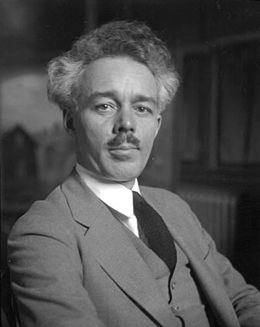
Lawren Stewart Harris, born in Brantford, Ontario, in 1885, was a towering figure in the development of Canadian art, known for his profound influence on the Group of Seven and his exploration of both the Canadian landscape and abstraction. His journey from a sickly child, often confined to bed, to a leading figure in Canadian art is a story of talent, determination, and a relentless pursuit of artistic innovation.
Early Life and Education
Harris was the son of Thomas Harris and Anne Stewart, and despite his frequent illnesses, he enjoyed a happy childhood. His love for drawing and painting emerged early, as he spent his convalescence creating Christmas cards for his family and sketching the homes in his neighborhood with his friend William Davidson. His artistic inclinations were nurtured during his time at St. Andrew's College in Toronto, where he excelled in sports, indulged in mischief, and filled his notebooks with illustrations. Recognizing his talent, his professor at the University of Toronto advised his mother to send him to Europe for formal art training.
In 1903, Harris arrived in Berlin, where he spent four winters immersed in rigorous artistic study. His education in Berlin was comprehensive, covering pencil, charcoal, watercolors, and later, portraiture and figure painting in oils. His summers were spent on sketching tours, including a memorable journey through the Austrian Tyrol. Harris’s time in Berlin also exposed him to avant-garde ideas, stimulating his active and exploring mind.
Return to Canada and Early Work
Upon returning to Toronto in 1910, Harris saw his surroundings with fresh eyes. His work became more vigorous, with a newfound sensitivity to color and form. He was drawn to the poorer areas of town, sketching old houses that he transformed into beautiful large canvases. These "house portraits" stirred controversy, as some criticized his choice of subject matter, while others recognized his unique vision. His work during this period marked him as a painter of significance, capturing the essence of Canadian life in a way that was both unflinching and deeply evocative.
Harris’s involvement with the Arts and Letters Club in Toronto brought him into contact with like-minded artists, including J.E.H. MacDonald, Tom Thomson, and A.Y. Jackson. This camaraderie laid the groundwork for the formation of the Group of Seven, a collective that would revolutionize Canadian art. Inspired by Scandinavian art and his sketching trips to places like Mattawa and the Laurentians, Harris began to focus on the Canadian landscape, capturing its rugged beauty with a bold, expressive style.
Formation of the Group of Seven
In 1914, Harris, along with Dr. James MacCallum, conceived the idea of building a studio in Toronto that would serve as a creative haven for Canadian artists. The Studio Building, completed later that year, became a hub for artists like MacDonald, Thomson, Jackson, and Harris himself. It was here that the Group of Seven was born, united by a shared vision of creating a distinctly Canadian art form.
The group’s first exhibition in 1920 at the Art Museum of Toronto was a watershed moment in Canadian art. Harris, who wrote the catalogue text, emphasized the importance of an art that grew out of the Canadian landscape and spirit. The exhibition was both a declaration of the group’s artistic mission and a challenge to the established norms of Canadian art.

Explorations of the Canadian Landscape
Throughout the 1920s, Harris undertook numerous sketching trips across Canada, from the North Shore of Lake Superior to Jasper Park in the Rocky Mountains. These expeditions resulted in some of his most iconic works, including "North Shore, Lake Superior" and "Maligne Lake, Jasper Park." His paintings from this period are characterized by their clarity of form, subdued radiance, and a focus on the vastness and solitude of the Canadian wilderness.
Harris’s commitment to capturing the essence of the Canadian landscape was not merely about representing nature. His work sought to convey the spiritual and symbolic dimensions of the land, stripping away details to reveal the underlying geometry and rhythm of the natural world. This approach marked a significant departure from traditional landscape painting and positioned Harris as a leading figure in the development of modern Canadian art.
Transition to Abstraction and Later Years
In the 1930s, Harris began to move toward abstraction, a logical progression from his increasingly simplified and stylized landscape paintings. His Arctic sketches, produced during a 1930 expedition to the Canadian North, took him to the brink of abstraction, capturing the stark, otherworldly beauty of the polar landscape with a minimalist approach.
By the early 1940s, Harris had relocated to Vancouver, where he continued to explore abstraction and non-objective painting. His later work, including portraits and abstract expressionist pieces, demonstrated his unshakeable commitment to artistic innovation and his belief in the power of art to transcend the material world.
Legacy
Lawren Harris passed away in 1970, leaving behind a legacy that continues to shape Canadian art. As a founding member of the Group of Seven, he helped to establish a national identity in art, rooted in the Canadian landscape yet reaching toward universal themes. His work is celebrated in major collections, including the National Gallery of Canada, and remains a touchstone for artists and art lovers alike.
Harris’s journey from a sickly child in Brantford to a leading figure in Canadian art is a testament to his vision, perseverance, and unwavering belief in the power of art to reveal deeper truths about the world around us.
Browse our collection of Canadian paintings for sale at the Canadian Classic Fine Art gallery, The best place to buy a painting online. We provide free shipping anywhere in Canada and the United States. Our Montreal art gallery sells paintings online exclusively and have a 14 days return policy.
